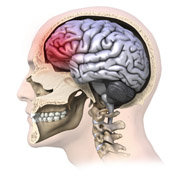Research and Innovation, UNL Office of

Center for Brain, Biology, and Behavior: Faculty Publications
Document Type
Article
Date of this Version
2015
Citation
Obesity (2015) 23, 1422–1428
Abstract
Objective: Changes in food-cue neural reactivity associated with behavioral and surgical weight loss interventions have been reported. Resting functional connectivity represents tonic neural activity that may contribute to weight loss success. This study explores whether intervention type is associated with differences in functional connectivity after weight loss. Methods: Fifteen participants with obesity were recruited prior to adjustable gastric banding surgery. Thirteen demographically matched participants with obesity were selected from a separate behavioral diet intervention. Resting-state functional magnetic resonance imaging was collected 3 months after surgery/ behavioral intervention. ANOVA was used to examine post-weight loss differences between the two groups in connectivity to seed regions previously identified as showing differential cue-reactivity after weight loss. Results: Following weight loss, behavioral dieters exhibited increased connectivity between left precuneus/ superior parietal lobule (SPL) and bilateral insula pre- to postmeal and bariatric patients exhibited decreased connectivity between these regions pre- to postmeal (Pcorrected
Included in
Behavior and Behavior Mechanisms Commons, Nervous System Commons, Other Analytical, Diagnostic and Therapeutic Techniques and Equipment Commons, Other Neuroscience and Neurobiology Commons, Other Psychiatry and Psychology Commons, Rehabilitation and Therapy Commons, Sports Sciences Commons


Comments
doi:10.1002/oby.21119